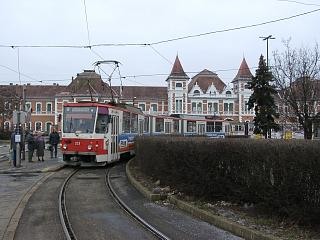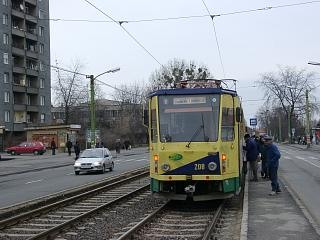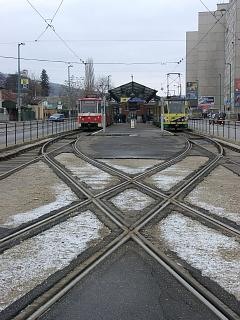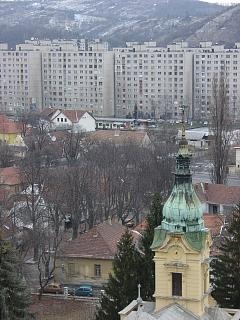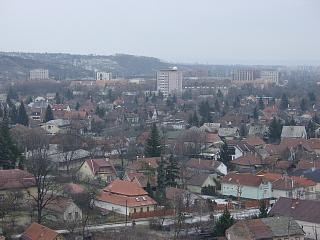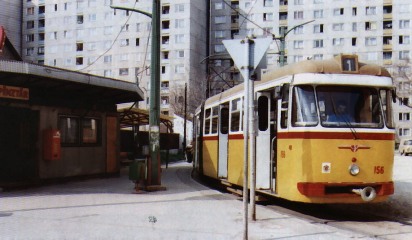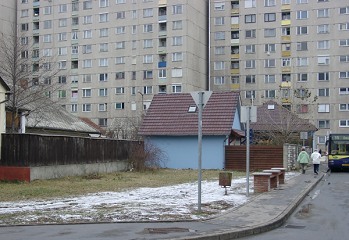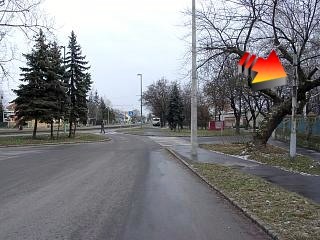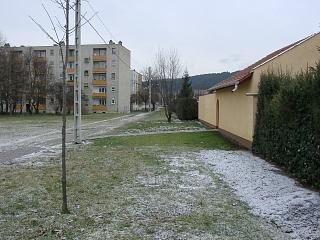[Kattints ide a magyar változathoz]
Before I start, I think I should explain the title: one of the largest forges of Hungary, the Diósgyőr Metal Works, where most of the rails used by tram systems in the country used to come from, operates in Miskolc. Hence, my series "The lost rails of Budapest" has a lot to do with this city - in an indirect way. Unfortunately Miskolc itself has also lost many of its urban railway services: the sylvan railway to Lillafüred was shortened, its industrial branch to Ládi rakodó was abandoned. Likeways, the one-track shuttle tram service number 4 to Tatárdomb ceased to operate in 1976. Two meter-gauge industrial railway lines that crossed Diósgyőr (which was a separate city originally, but was later attached to Miskolc) were also closed a few decades ago. Miskolc - once called "City of Steel" - is a big loser of the political and economic revolutions that succeeded the downfall of the "Iron Curtain", and you can see signs of that all over the place!
Let's start our journey at the main railway station, or Tiszai pályaudvar, where both tramlines - route 1, and it's branch to the Metal Works, route 2 - start. This is an ex-Kosice (SK) Tatra KT8D5 articulated car.
Another ex-Kosice Tatra in Diósgyőr.
The other terminus of route 1 in Diósgyőr.
Diósgyőr used to be a small village in a valley of the headlands of the Bükk mountains, with some industrial outlets on its skirts. During communism, it was turned into a heavy-industry center, with lots of people being relocated to here. To give them homes, ugly highrise apartment houses were built all over the place.
The city has never regained its personality, and it's not likely that it ever will, because the bankruptcy of local industry leaves almost no funds for a rearrangement of the landscape.
You can see some new cottages being built without proper landscaping.
The ruins of a 14th century castle, a thermal
fountain with an open-air bath and the backdrop of the mountains are left
without comprehensive touristic usage, and I find this very saddening...
The reversing loop of route 1 was built for the unidirectional Bengali trams in the sixties, and was closed in 1994, when there were enough bidirectional Bengali and Tatra KT8D5 cars.
A few overhead wire posts can still be seen around...
... just like this post that used to hold
the traffic lights for the tram.
The narrow-gauge industrial track of the Lillafüred Sylvan Railways
The inner terminus of this sylvan railway is located at a place which locals still call "Kilián" years after it was changed to something else. The inner terminus of this railway, used primarily for the shipment of timber, was located closer to the inner city originally, but in the seventies the line was cut back to here.
Although passenger traffic ended here (near the stop of tram route 1) an industrial track went further to Ládi rakodó.
This track was closed in 1994-95, but you
can still see leftovers of it, like this abandoned level crossing!
Next page: "lost" tram route 4, and some night pictures
Back to the opening page
HamPage
